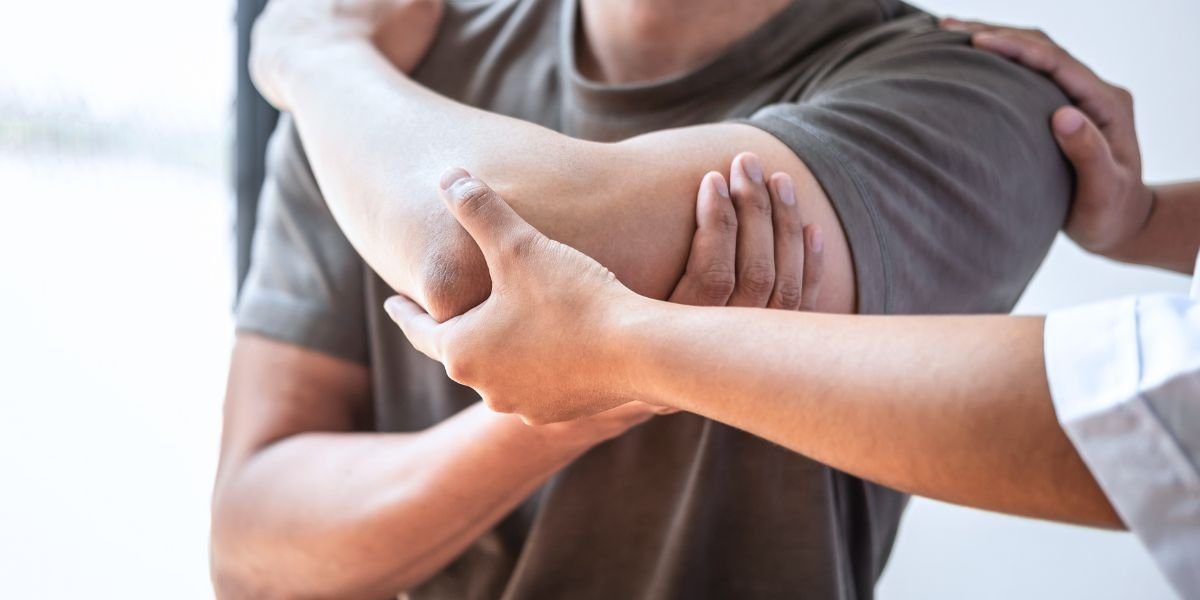Physiotherapy For Elbow Pain
Elbow Pain
Suffering from elbow pain? Physiotherapy offers several potential treatments, ranging from massage to heat or cold application and stretching exercises. Let’s explore how physiotherapy can help reduce discomfort while also improving strength, mobility, and overall function! We’ll even include tips for preventing the issue in everyday life so you can arm yourself with knowledge on your journey toward finding relief from elbow pain through physio.
What is Elbow Pain?
From a dull ache to intense sharp pain, elbow discomfort can seriously impede your day-to-day activities. Elbow afflictions such as overuse injuries, bursitis and tendonitis are not uncommon causes of this type of distress. Fortunately, the right treatment plan tailored for the cause and intensity of your symptoms may bring relief – physiotherapy is often highly beneficial in managing various types or degrees of elbow pain.
Most Common Types of Elbow Pain?
The most common types of elbow pain include:
Tendinitis – inflammation of the tendons that support the elbow joint
Bursitis – swelling of a fluid-filled sac (bursa) around the elbow joint
Fractures – breaks in one or more bones that form the elbow joint
Sprains – tears in the ligaments that support and stabilize the elbow joint
Overuse injuries – strain to the muscles and tendons from repetitive motions
How Can Physiotherapy Help Elbow Pain?
Physiotherapy provides a comprehensive approach to reducing elbow discomfort and enhancing joint mobility. Through massage, stretching, taping/bracing techniques and standardized exercises that focus on strengthening the area around the joint, practitioners can help promote improved flexibility while also supporting stability in this important body part through customized splints or braces where necessary.
Physiotherapy Elbow Assessment
Physiotherapists typically use a combination of methods to assess pain in the elbow, including:
Patient history: The physiotherapist will ask the patient about the location, duration, and nature of their pain, as well as any aggravating or relieving factors.
Physical examination: The physiotherapist will examine the patient’s elbow, including the range of motion, strength, and any signs of inflammation or swelling.
Special tests: The physiotherapist may use specific tests, such as the Cozen’s test, the tennis elbow test, or the radial nerve compression test, to help identify the cause of the pain.
Imaging: If necessary, the physiotherapist may refer the patient for imaging studies, such as an X-ray or MRI, to further evaluate the elbow.
Pain Scale: Physiotherapists may ask the patient to rate their pain on a scale of 0-10, which is called a Visual Analog Scale (VAS).
Overall, the physiotherapist will use a combination of these methods to make a diagnosis and develop an appropriate treatment plan.
Physiotherapy Techniques to Reduce Elbow Pain
Exercise
Exercise-based regimens to restore range of motion, flexibility and strength.
Manual Therapy
Manual therapy from the physical therapist manipulating the joint.
Soft Tissue Massage
Soft tissue massage for relaxation in surrounding muscles.
Electrical Stimulation
Electrical stimulation such as ultrasound or interferential current to minimize inflammation and alleviate discomfort.
Tips for Managing Elbow Pain at Home
If you are experiencing elbow pain and it is keeping you from doing things you love to do you should see a healthcare specialist. Here are some tips for easing the pain while you are at home.
Here are some tips to help treat your elbow pain at home:
Try using cold and hot therapies. Apply a cold pack or ice wrapped in a towel to the affected area for 15-20 minutes several times per day. Alternately, use a warm compress such as a hot water bottle or electric heating pad.
Rest the elbow joint by avoiding activities that aggravate the pain and fatigue the muscles around the joint.
Perform gentle stretches and exercises designed specifically to help with elbow pain, as recommended by your physical therapist.
Take an over-the-counter anti-inflammatory medication such as Ibuprofen or Aspirin, as directed by your doctor or pharmacist.
Use splints at night to keep your elbow in position while you sleep and reduce pressure on the joint during movement.
Conclusion
Physiotherapy is an effective approach to managing elbow pain, helping reduce inflammation, decrease tension, and increase range of motion. Working with a physical therapist who can tailor treatment according to individual needs may provide positive outcomes that will improve your quality of life. Take action today by seeking the right tools for improving elbow function!
Additional Resources
Healthline with 5 exercises for tennis elbow.
WebMD article on do you need physical therapy for elbow pain.
About the Author
Juliana Bergin PT is a certified physiotherapist and one of the owners of Bergin Motion. Bergin Motion is a family-run Barrie Physiotherapy Clinic located in Barrie’s Southend. Juliana specializes in orthopedic injuries. Juliana works with high-end athletes as well as weekend warriors. Juliana is part of a team at Bergin Motion in Barrie, Ontario that works with all kinds of conditions.
Bergin Motion
Is a family owned physiotherapy company built by the Bergin family. Our family has served as physiotherapists in the Barrie area for over 30 years, spanning two generations. We are passionate about this community and helping people achieve their highest potential. Book with us now!

